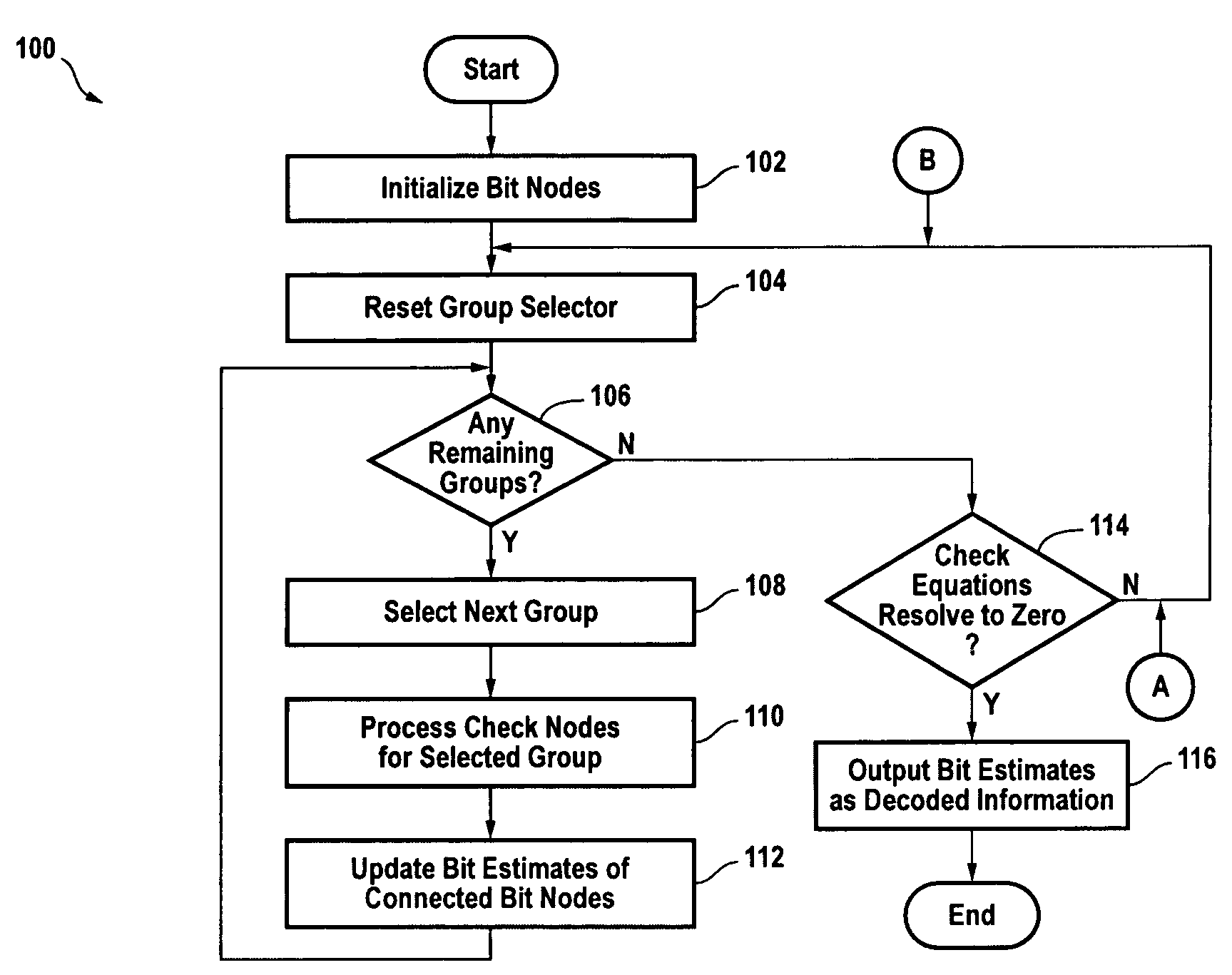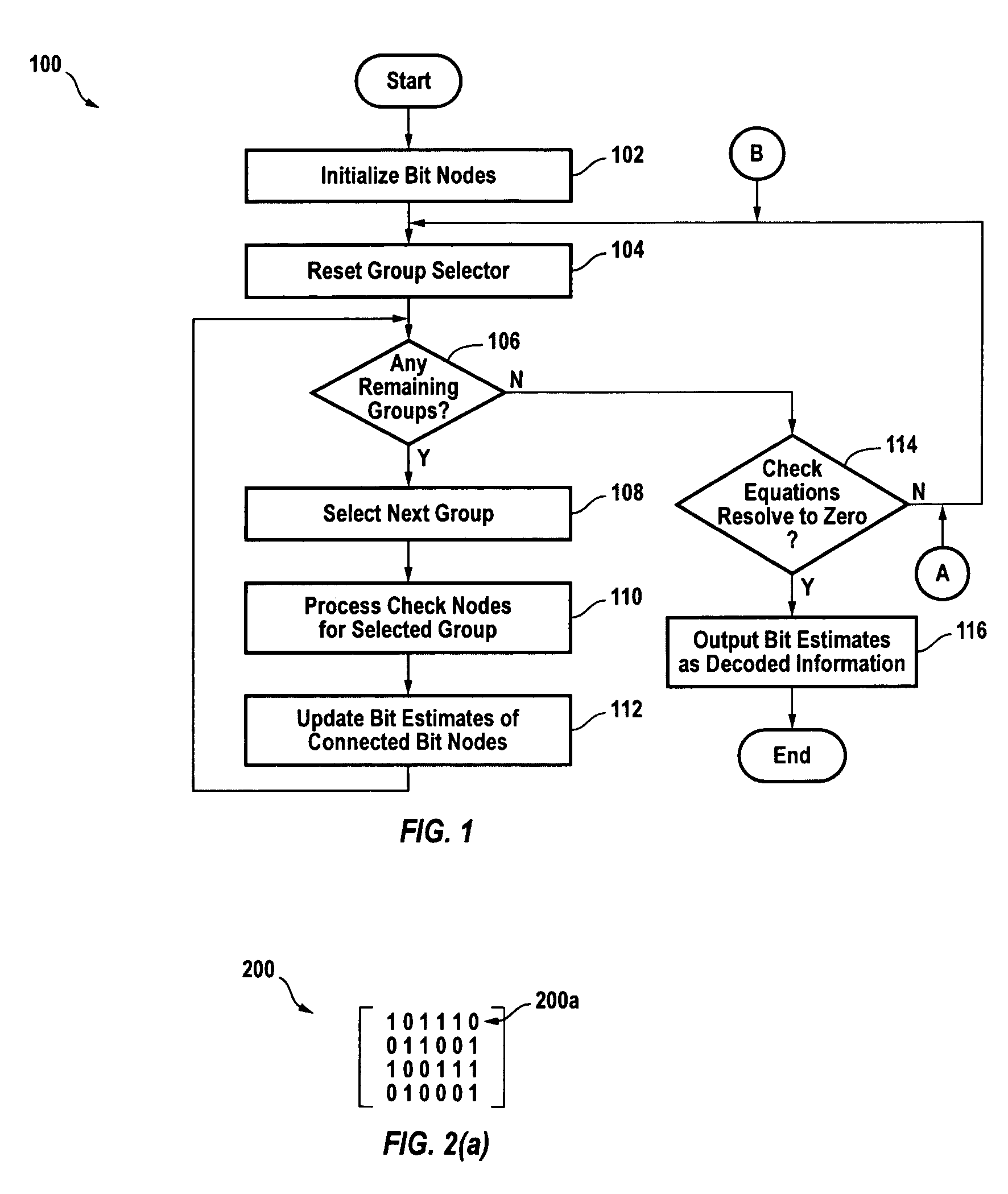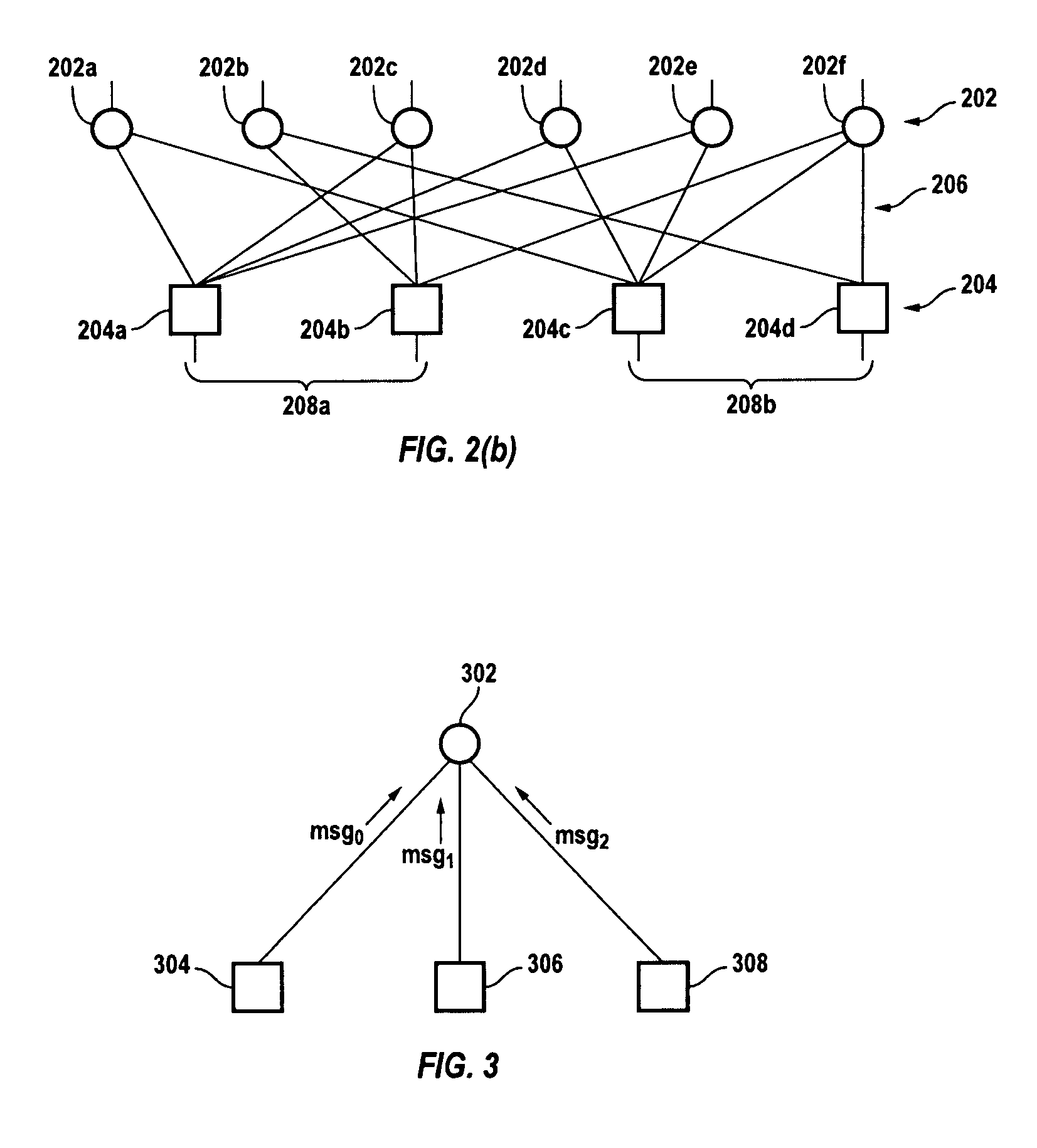Efficient decoders for LDPC codes
a low density parity and code technology, applied in the field of ldpc codes decoders, can solve the problems of increasing the time for the decoder to converge, increasing the time for the decoder to detect or counteract certain abnormal conditions, and the current ldpc decoders are also ineffective, so as to reduce the number of bit errors and increase the effect of bit errors
- Summary
- Abstract
- Description
- Claims
- Application Information
AI Technical Summary
Benefits of technology
Problems solved by technology
Method used
Image
Examples
first embodiment
[0041]the invention comprises a hybrid LDPC decoder, a decoder for LDPC codes having the following two properties:[0042]1.) The structure of the LDPC code allows parallel processing of groups of check nodes simultaneously. These check nodes groups can also be referred to as groups of rows in the LDPC code's parity check matrix.[0043]2.) In at least one of the above check nodes groups, there are at least two check nodes that are connected to one bit node. Referring to the parity check matrix of the LDPC code, in at least one of group of rows there is a column with a weight that is greater than one.
[0044]FIG. 1 depicts a flowchart of the decoding method 100 employed by this hybrid LDPC decoder. The method is iterative and contemplates dividing up the check nodes into groups. Within each iteration, all the groups of check nodes are sequentially processed, with the check nodes in each group processed in parallel. The method continues to iterate until all the check node equations are res...
second embodiment
[0065]the invention addresses the inherent instability of an iterative LDPC decoder that arises because of the feedback loop that is present between the decoder outputs and inputs. Due to this feedback, the decoder's output may oscillate, without converging to a proper solution.
[0066]Usually, the number of erroneous output bits decreases with the number of decoding iterations as shown in FIG. 5(a), until all the erroneous bits are resolved. Sometimes, as shown in FIG. 5(b), the decoder has small oscillations over a few unresolved bits, until it corrects them, ending up with no errors. However, on rare occasions, the decoder does not converge at all, and the number of erroneous bits oscillates significantly, as shown in FIG. 5(c), with the magnitude and frequency of these oscillations depending upon the specific code, the decoding algorithm and the signal to noise ratio of the decoded signal. If the decoder has no indication of this phenomenon, the decoder output, comprising the bit ...
third embodiment
[0081]the invention involves a concatenated coding structure, illustrated in FIG. 7(a), comprising an outer block code 702, for example, a Bose, Chaudhuri and Hocquenghem (BCH) code, and an inner LDPC code 704. A corresponding decoding system, illustrated in FIG. 7(b), comprises an LDPC decoder 706, employing an iterative LDPC process, such as that illustrated in FIG. 1, modified in the manner to be described, followed by an inner block decoder 708.
[0082]In this embodiment, the iterative LDPC processor is modified to periodically check, for example, every nth iteration, where n in an integer of 1 or more, whether the number of unsolved parity check equations falls below a predetermined, programmable threshold. If so, the current estimated bits are output from the LDPC decoder 706, and input to block decoder 708.
[0083]The predetermined threshold may be set with the error correction capability of the block decoder 708 in mind, for example, by setting the threshold low enough that the ...
PUM
 Login to View More
Login to View More Abstract
Description
Claims
Application Information
 Login to View More
Login to View More - R&D
- Intellectual Property
- Life Sciences
- Materials
- Tech Scout
- Unparalleled Data Quality
- Higher Quality Content
- 60% Fewer Hallucinations
Browse by: Latest US Patents, China's latest patents, Technical Efficacy Thesaurus, Application Domain, Technology Topic, Popular Technical Reports.
© 2025 PatSnap. All rights reserved.Legal|Privacy policy|Modern Slavery Act Transparency Statement|Sitemap|About US| Contact US: help@patsnap.com



